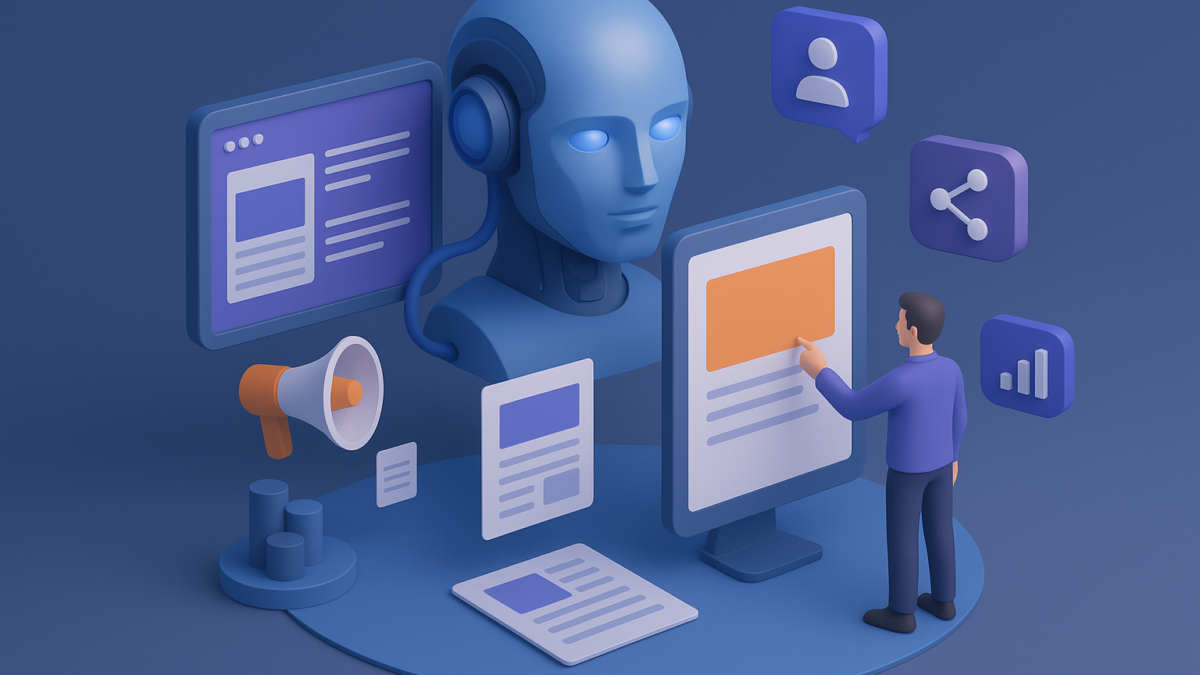AI-Infused Content Syndication: B2B Marketing Optimization in 2025
AI-Infused Content Syndication: Scalable B2B Marketing in 2025
In today’s digital-first world, content is no longer just about creation — it’s about distribution. For B2B marketers, content syndication has long been a powerful tactic to amplify reach, build brand authority, and generate leads. But the traditional “spray and pray” approach of pushing the same content across multiple channels is quickly becoming outdated. Enter AI-infused content syndication — a smarter, more data-driven way to ensure your content not only reaches the right audience but also engages them meaningfully.
As artificial intelligence continues to transform marketing, AI-powered syndication is poised to redefine how businesses scale their content strategies in 2025 and beyond.
What is AI-Infused Content Syndication?
At its core, content syndication is the process of republishing or distributing content blogs, whitepapers, case studies, videos across third-party platforms to reach wider audiences. Traditionally, this relied heavily on manual targeting, generic audience lists, and post-campaign analysis.
AI-infused syndication, on the other hand, integrates artificial intelligence into every step of the process:
- Audience Mapping → AI identifies and segments high-intent audiences based on behavior, demographics, and predictive analytics.
- Content Personalization → Different personas receive tailored versions of the same asset.
- Real-Time Optimization → Campaign performance is monitored continuously, and distribution is adjusted dynamically.
The result? More precision, higher engagement, and significantly better ROI.
Why Businesses Need AI in Content Syndication
1. Smarter Audience Targeting
AI can analyze vast datasets to identify who is most likely to engage with your content. Instead of blasting a whitepaper to 10,000 contacts, AI narrows the audience to the 2,000 who show buying intent — reducing waste and improving conversion rates.
2. Personalization at Scale
Buyers expect personalized journeys. AI makes it possible to serve different versions of the same content — such as a sustainability-focused report for procurement managers and a cost-efficiency angle for CFOs — without manual effort.
3. Real-Time Optimization
Traditional syndication waits until after a campaign to assess success. With AI, optimization happens instantly. If one channel underperforms, AI reallocates budget and distribution to high-performing sources automatically.
4. Better Lead Quality
AI filters out low-intent prospects by assessing signals such as engagement time, content downloads, and past interactions. This ensures that only marketing-qualified leads (MQLs) reach your sales team.
How Businesses Can Leverage AI-Driven Syndication
- Choose AI-Powered Platforms
Opt for syndication partners that integrate machine learning and predictive targeting. This ensures your campaigns are guided by real-time insights, not guesswork. - Repurpose and Enrich Content
AI tools can analyze which pieces of your existing content perform best and suggest repurposing strategies — for example, turning a whitepaper into a short video or infographic for different audience segments. - Align with ABM Strategies
Account-Based Marketing (ABM) and AI-driven syndication go hand in hand. AI can match your high-value accounts with the right content, ensuring deeper engagement across the buyer journey. - Track Beyond Clicks
Use AI-driven analytics to track not just clicks or downloads, but engagement depth — how long someone interacted with your asset, what other topics interest them, and how close they are to making a purchase decision.
A Hypothetical Example
Imagine a B2B SaaS company launching a new cybersecurity platform. Instead of blasting their whitepaper across all tech media sites, they leverage AI-infused syndication.
- The AI engine identifies CISOs in the finance and healthcare sectors as the most high-intent audience.
- It then distributes two different versions of the same whitepaper — one highlighting compliance benefits for healthcare, the other focusing on fraud prevention for finance.
- Midway through the campaign, AI detects higher engagement in video formats and shifts part of the budget to promote a short explainer video.
The result? A 40% increase in MQLs and a much shorter sales cycle.
Challenges & Considerations
While AI offers transformative benefits, businesses must also be mindful of:
- Data Privacy & Compliance → Syndication must comply with GDPR, CCPA, and industry regulations.
- Quality Content First → AI can optimize distribution, but weak content won’t perform no matter how smart the system is.
- Avoiding Over-Automation → Human oversight is still needed to ensure brand voice and strategic alignment.
Future Outlook: Where AI-Driven Syndication is Heading
The next evolution of AI in syndication lies in hyper-personalization. Generative AI will soon create content variations in real-time — adapting tone, format, and even language based on each buyer’s profile.
We’ll also see predictive lead nurturing, where AI doesn’t just deliver content but also predicts the next piece a prospect will need — building a seamless journey from awareness to purchase.
Conclusion
AI-infused content syndication is not just a marketing trend; it’s the future of scalable B2B growth. By combining intelligent targeting, dynamic personalization, and real-time optimization, businesses can amplify their reach, generate better-quality leads, and maximize ROI.
In 2025, the companies that embrace AI-driven syndication will not only stand out from the noise but also build stronger, more meaningful connections with their audiences.
Unlock scalable B2B Content Syndication with precision targeting.
You May Also Like: How to Optimize Your Content for Generative AI in 2025





